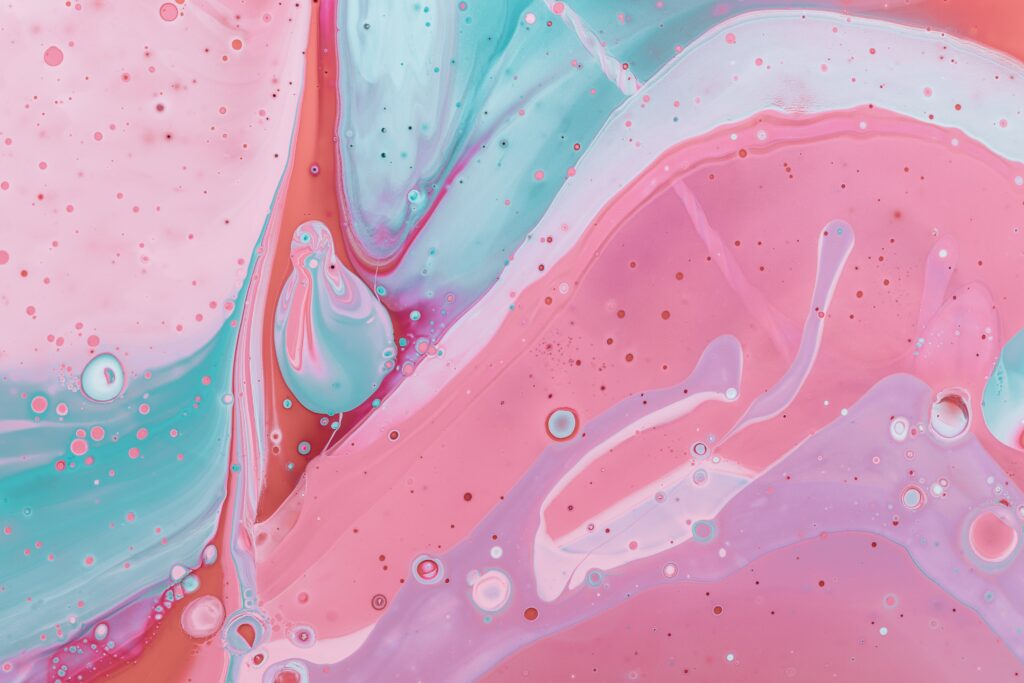If you have ever felt the urge to express your creativity on your walls, you may have wondered if acrylic paint is a suitable option. Well, look no further! In this article, we will explore the possibility of using acrylic paint on walls and whether it is a viable choice for your artistic endeavors. We will discuss the advantages and considerations of using this versatile medium, providing you with all the information you need to make an informed decision. Whether you are a seasoned artist or a curious beginner, read on to discover the potential of using acrylic paint on walls.
What is Acrylic Paint?
Acrylic paint is a type of water-based paint that uses acrylic polymer emulsion as its binder. It is commonly used by artists for painting on canvas, but it is also a suitable option for painting walls. Acrylic paint offers a wide range of vibrant colors, quick drying time, and easy clean-up, making it a popular choice for both professional painters and DIY enthusiasts.
Definition of Acrylic Paint
Acrylic paint consists of pigment particles suspended in an acrylic polymer emulsion. This type of paint is known for its ability to dry quickly, forming a flexible and durable film on the surface it is applied to. it can be thinned with water and provides a range of paint consistencies, from heavy-bodied to fluid, depending on the desired effect.
Characteristics of Acrylic Paint
Acrylic paint possesses several key characteristics that make it suitable for painting walls. It has a high pigment load, allowing for vibrant and saturated colors. It also has excellent adhesion, meaning it adheres well to various surfaces, including walls. Acrylic paint is resistant to cracking, peeling, and fading, ensuring long-lasting and durable results. Additionally, it is low in odor and non-toxic, making it a safe option for indoor use.
Types of Acrylic Paints
There are various types of acrylic paints available, each with its own unique properties. Acrylic latex paint is specifically designed for interior and exterior walls, offering excellent coverage, durability, and color retention. Acrylic enamel paint is known for its high gloss finish, making it suitable for highlighting accents or creating a decorative effect. Acrylic craft paint is a more economical option and is often used for smaller scale projects or artistic endeavors.
Advantages of Using Acrylic Paint on Walls
Versatility and Variety of Colors
One of the major advantages of using acrylic paint on walls is the versatility and wide range of colors available. Acrylic paint comes in an extensive palette, from bold and vibrant hues to soft and muted tones, allowing you to create any desired look or ambiance for your space. Whether you prefer a modern and minimalist style or a vibrant and eclectic aesthetic, acrylic paint offers endless possibilities.
Quick Drying Time
Another significant advantage of acrylic paint is its quick drying time. Unlike oil-based paints that can take days or even weeks to dry, acrylic paint dries relatively fast, usually within an hour. This means you can complete your painting project in a shorter amount of time and enjoy your newly painted walls sooner. The quick drying time also allows for easier application of multiple coats, saving you time and effort.
Easy Clean-Up
acrylic paint is water-based, which makes it incredibly easy to clean up. If you accidentally spill or splatter paint on a surface, you can simply wipe it off with water and a cloth. This makes acrylic paint ideal for DIY enthusiasts who may be less experienced with paint application or for households with children or pets. You can enjoy the creative process without worrying too much about permanent messes.
Excellent Adhesion
Acrylic paint has excellent adhesion properties, meaning it adheres well to various surfaces, including walls. Whether your walls are made of drywall, plaster, cement, or wood, acrylic paint will bond securely to the surface, creating a long-lasting and durable finish. This ensures that your painted walls will not peel or crack easily, even with regular wear and tear.
Durability
One of the key advantages of acrylic paint is its durability. Once dried, acrylic paint forms a strong and flexible film that can withstand everyday use, making it suitable for high-traffic areas such as living rooms, hallways, and kitchens. Acrylic paint is resistant to chipping, peeling, and fading, and it can withstand frequent cleaning without losing its vibrancy or finish.
Low Odor and Non-Toxic
Acrylic paint is known for its low odor and non-toxic nature, making it a safer option for indoor use, especially in areas with poor ventilation. Unlike oil-based paints that emit strong fumes and require the use of solvents for clean-up, acrylic paint has a minimal scent and can be easily cleaned with water. This makes it ideal for painting bedrooms, nurseries, or any other areas where air quality is a concern.
Compatibility with Different Surfaces
Acrylic paint is compatible with a wide variety of surfaces, making it a versatile choice for walls in different rooms or spaces. Whether you are painting drywall, plaster, cement, or wood, acrylic paint will adhere well and provide a smooth and even finish. This compatibility allows you to unleash your creativity and experiment with different painting techniques or effects.
Cost-Effective Option
Using acrylic paint on walls is a cost-effective option, especially when compared to other types of paints such as oil-based or specialty paints. Acrylic paint is generally more affordable and readily available, making it suitable for both small-scale touch-ups and larger painting projects. Its ease of use, low clean-up requirements, and long-lasting durability make it a budget-friendly choice for transforming your walls.

Considerations Before Using Acrylic Paint on Walls
Surface Preparation
Before painting your walls with acrylic paint, it is crucial to properly prepare the surfaces. This includes removing any loose paint, dirt, or debris, and ensuring that the wall is clean and dry. Dust and grease should be removed using soap and water or a mild detergent. Additionally, any surface imperfections, such as cracks or holes, should be patched and smoothed out to ensure a smooth painting surface.
Priming the Wall
While acrylic paint is known for its excellent adhesion, it is still important to prime the wall before painting. Priming helps to create an even surface, promotes better paint adhesion, and enhances the durability of the paint. Use an acrylic primer specifically designed for walls and apply it evenly using a brush or roller. Allow the primer to dry completely before proceeding with the paint application.
Choosing the Right Acrylic Paint
Not all acrylic paints are created equal, and it is important to choose the right type of acrylic paint for your walls. Consider factors such as the paint’s quality, pigmentation, and suitability for interior or exterior use. High-quality acrylic paints generally provide better coverage, color retention, and durability. It is also important to choose the appropriate sheen or finish to achieve the desired look for your walls.
Testing on a Small Area
Before committing to painting the entire wall, it is always a good idea to test the acrylic paint on a small, inconspicuous area. This allows you to evaluate the color, coverage, and adhesion of the paint and make any necessary adjustments before applying it to the entire wall. Testing can also help you determine if any additional surface preparation or priming is required.
Environmental Factors
Consider the environmental factors that can affect the performance and longevity of acrylic paint on your walls. Factors such as humidity, temperature, and exposure to sunlight can impact the drying time, adhesion, and color fading of the paint. Ensure proper ventilation and maintain the recommended temperature and humidity levels for optimal paint application and long-lasting results.
Longevity of the Finish
While acrylic paint is known for its durability, it is important to keep in mind that the finish may require maintenance and touch-ups over time. Regular cleaning and occasional touch-ups can help preserve the vibrancy and quality of the painted walls. Take into account factors such as foot traffic, exposure to moisture, and general wear and tear when assessing the longevity of the finish.
Preparing the Wall for Acrylic Paint
Cleaning the Wall
Before applying acrylic paint to your walls, it is essential to clean them thoroughly. Remove any dirt, dust, or grease using soap and water or a mild detergent. Pay special attention to areas around windows, doors, and baseboards, as these tend to accumulate more dirt and grime. Use a sponge or cloth to scrub the walls gently, rinse with clean water, and allow them to dry completely before painting.
Repairing Surface Imperfections
Inspect the walls for any surface imperfections such as cracks, holes, or dents. These should be repaired before painting to ensure a smooth and even finish. Use a suitable filler or spackling compound to fill in the imperfections, following the manufacturer’s instructions. Once the filler is dry, use sandpaper to smooth the repaired areas, ensuring they blend seamlessly with the rest of the wall.
Sanding the Wall
Even if the wall is in good condition, it is still beneficial to lightly sand the surface before painting. Sanding helps to create a slightly rough texture, promoting better adhesion of the paint. Use fine-grit sandpaper and sand the entire wall in a circular motion to achieve an even surface. After sanding, remove any dust or debris using a clean cloth or a tack cloth.
Applying a Primer
After preparing the wall, apply a suitable primer before painting with acrylic paint. A primer helps to create a smooth and consistent surface, enhances the adhesion of the paint, and improves the overall longevity of the finish. Use a brush or roller to apply the primer evenly, making sure to cover the entire wall. Allow the primer to dry completely according to the manufacturer’s instructions before proceeding with the paint application.

Choosing the Right Acrylic Paint for Walls
Interior vs Exterior Acrylic Paint
When choosing acrylic paint for walls, it is important to select the appropriate type for your specific needs. Interior acrylic paint is designed for painting indoor walls and offers excellent coverage, durability, and color retention. Exterior acrylic paint, on the other hand, is formulated to withstand outdoor conditions and provides additional protection against UV rays, moisture, and temperature fluctuations.
Paint Sheen and Finish
Consider the desired sheen or finish for your painted walls when selecting acrylic paint. Different sheens, such as matte, eggshell, satin, and semi-gloss, offer varying levels of shine and durability. Matte finishes provide a low-sheen and subtle look, making them ideal for areas where you want to minimize imperfections. Higher sheens, such as semi-gloss, offer a more durable and reflective surface, making them suitable for high-traffic areas or areas prone to moisture.
Quality and Pigmentation
Choose high-quality acrylic paint that offers excellent coverage and pigmentation. Higher-quality paints generally require fewer coats for full coverage, saving you time and effort. They also tend to have better color retention, resisting fading or yellowing over time. Look for acrylic paints with high levels of pigment, as this will ensure rich and vibrant colors on your walls.
Eco-Friendly Options
If environmental considerations are important to you, there are eco-friendly options available when choosing acrylic paint. Look for paints that are labeled as low-VOC (volatile organic compounds) or zero-VOC, as these have reduced levels of harmful emissions. Additionally, opt for acrylic paints that are labeled as water-based or have an eco-conscious manufacturing process.
How to Paint Walls with Acrylic Paint
Gathering the Necessary Supplies
Before painting your walls with acrylic paint, gather all the necessary supplies. This includes acrylic paint in the desired colors, brushes or rollers, an acrylic primer, drop cloths or plastic sheets to protect the surrounding areas, painter’s tape for clean edges, a tray or palette for the paint, and a ladder or step stool for reaching higher areas.
Preparing the Workspace
Prepare the workspace by covering the floor and any furniture with drop cloths or plastic sheets to protect them from paint splatters. Remove any wall decor, outlet covers, or switch plates. Use painter’s tape to cover areas you do not want to paint, such as baseboards, trims, or adjoining walls. Ensure that the room is well-ventilated by opening doors or windows or using fans or air circulation systems.
Applying the First Coat
Start by applying the first coat of acrylic paint to the walls. Dip a brush or roller into the paint, removing any excess, and apply the paint in smooth and even strokes. Begin painting from the top of the wall and work your way down, using long vertical or horizontal strokes. Ensure even coverage and feather out any brush or roller marks for a seamless finish.
Allowing the Paint to Dry
After applying the first coat, allow the paint to dry completely before proceeding with additional coats. Follow the manufacturer’s instructions for the recommended drying time, as it can vary depending on factors such as humidity and temperature. Avoid touching or placing objects against the painted walls during this drying period to prevent smudges or damages.
Applying Additional Coats
Depending on the desired color saturation and coverage, you may need to apply multiple coats of acrylic paint. Allow each coat to dry completely before applying the next one. Use the same technique of smooth and even strokes, ensuring that the brush or roller is loaded with an adequate amount of paint. Apply additional coats until you achieve the desired color and finish.
Adding Accents and Patterns
Once the base coat is dry, you can add accents or patterns to your painted walls using acrylic paint. This could include creating a feature wall with a contrasting color, stenciling or stamping designs, or using painter’s tape to create geometric patterns. Be creative and have fun experimenting with different techniques to personalize your space.
Sealing the Painted Wall
While acrylic paint is generally durable and does not require sealing, you may choose to apply a clear sealer or finish for added protection. Clear sealers can help enhance the durability, washability, and resistance to stains or moisture. It is important to select a clear sealer that is compatible with acrylic paint and follow the manufacturer’s instructions for application.

Tips and Techniques for Using Acrylic Paint on Walls
Using Brushes vs Rollers
When painting walls with acrylic paint, you can choose between using brushes or rollers. Brushes are ideal for precision work, such as painting corners, edges, or intricate details. Rollers, on the other hand, are more efficient for covering larger areas quickly and evenly. A combination of brushes and rollers can provide maximum coverage and smooth results.
Creating Textured Effects
Acrylic paint offers the opportunity to create textured effects on your walls. Experiment with techniques such as stippling, sponging, or ragging to achieve unique and visually interesting textures. These techniques can add depth and dimension to your painted walls, creating a striking focal point or an overall textured look.
Blending Colors
Acrylic paint allows for easy color blending and mixing. If you want to create a gradient effect or transition between different colors on your walls, blend the paints together while they are still wet. Use a clean brush or roller to go over the areas where the colors meet, gently blending them together to create a smooth and seamless transition.
Achieving Smooth and Even Coverage
To achieve a smooth and even coverage when painting walls with acrylic paint, it is important to load the brush or roller with an adequate amount of paint. Avoid applying too much pressure, as this can create streaks or clumps of paint. Work in small sections, ensuring each stroke slightly overlaps the previous one for consistent coverage. When using a roller, use a rolling motion to distribute the paint evenly.
Avoiding Common Mistakes
When using acrylic paint on walls, it is important to avoid common mistakes that can affect the final result. Avoid overloading the brush or roller with paint, as this can lead to drips, uneven application, or smudges. Similarly, avoid applying too little paint, as this can result in patchy coverage. Work methodically and patiently, allowing each coat to dry completely before proceeding.
Maintenance and Care of Acrylic Painted Walls
Cleaning Acrylic Painted Walls
Acrylic painted walls are relatively easy to clean and maintain. Use a gentle cleaner or mild soap and water solution to remove dirt or stains from the walls. Ensure that you do not use abrasive cleaners or harsh chemicals, as these can damage the paint finish. Use a soft cloth or sponge to gently wipe the walls, being careful not to scrub too hard.
Maintaining the Finish
To maintain the finish of your acrylic painted walls, it is important to avoid abrasive or harsh cleaning methods. Regularly dust the walls using a soft cloth or a feather duster to remove any dust or debris. In high-traffic areas prone to scuff marks, consider adding a protective top coat or clear sealer to enhance durability and make cleaning easier.
Touching Up Painted Walls
Over time, your acrylic painted walls may require touch-ups to maintain their appearance. Keep leftover paint in a sealed container or store the paint label with the color information, so you can easily match it when needed. Use a small brush or roller to touch up any areas with minor scuffs, scratches, or color fading. Blend the touch-up paint seamlessly with the surrounding area for a cohesive finish.

Other Creative Uses for Acrylic Paint on Walls
Creating Murals and Wall Art
Acrylic paint offers endless possibilities for creating murals and wall art. Whether you want to transform a blank wall into a stunning centerpiece or add a personal touch to your space, acrylic paint allows you to unleash your creativity. You can paint landscapes, abstract designs, or intricate patterns, turning your walls into unique works of art.
Stenciling and Stamping
Stenciling and stamping are popular techniques for adding patterns or textures to painted walls. Acrylic paint allows for easy stenciling or stamping, providing crisp and clean lines. Explore various stencil designs or create your own, and use acrylic paint to add decorative accents or focal points to your walls.
Decorative Techniques
Acrylic paint can be used in combination with other decorative techniques to create unique and visually appealing wall finishes. Consider techniques such as marbling, color washing, or faux finishes to add depth, texture, or a distressed look to your walls. These techniques can add character and interest to any space and allow you to personalize your walls according to your style preferences.
Personalizing Space
One of the greatest advantages of using acrylic paint on walls is the ability to personalize your space. Acrylic paint allows you to choose colors that reflect your personality or match your desired theme or style. Whether you prefer a minimalist and serene atmosphere or a vibrant and lively ambiance, acrylic paint enables you to customize your walls to create a space that truly feels like home.
Conclusion
Acrylic paint is a versatile and practical choice for painting walls. With its wide range of colors, quick drying time, easy clean-up, and excellent adhesion, it offers numerous advantages for both professional painters and DIY enthusiasts. By considering factors such as surface preparation, choosing the right acrylic paint, and utilizing proper techniques, you can achieve beautiful and long-lasting results. Whether you are transforming your living room, bedroom, or any other space, acrylic paint allows you to unleash your creativity and personalize your walls to reflect your unique style.




